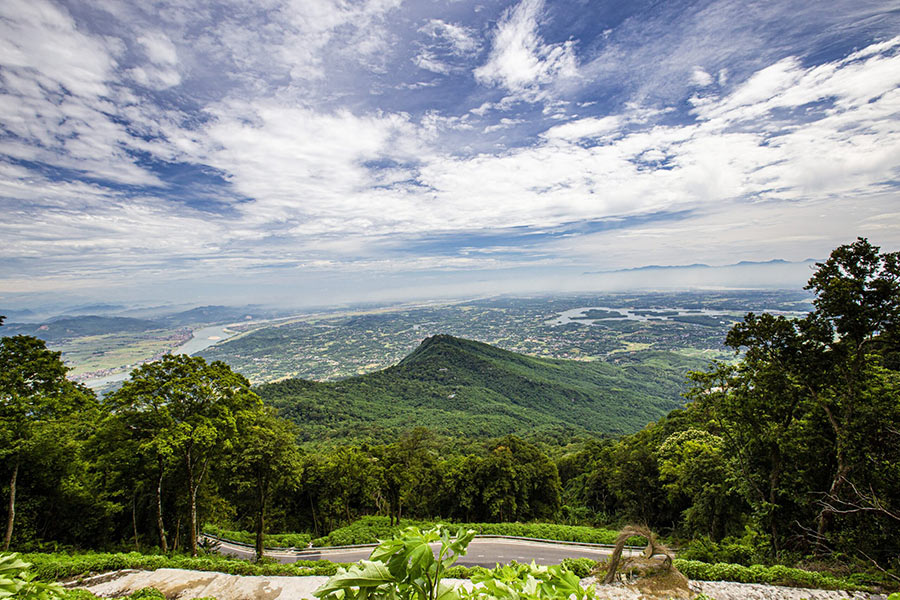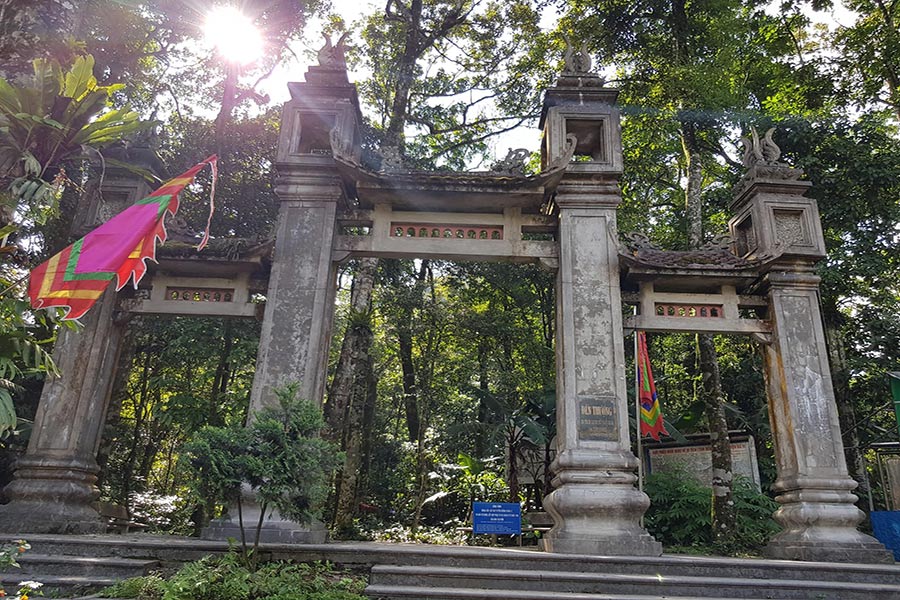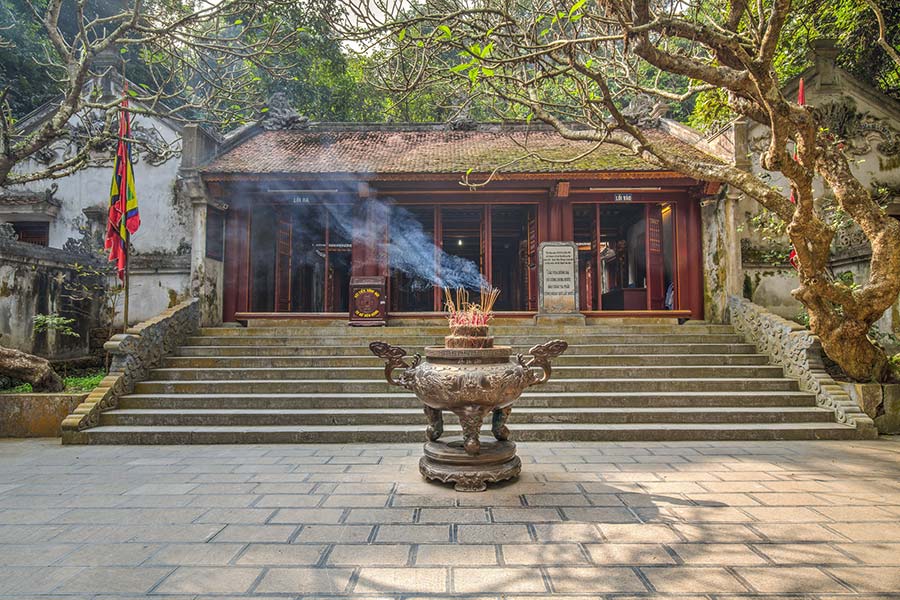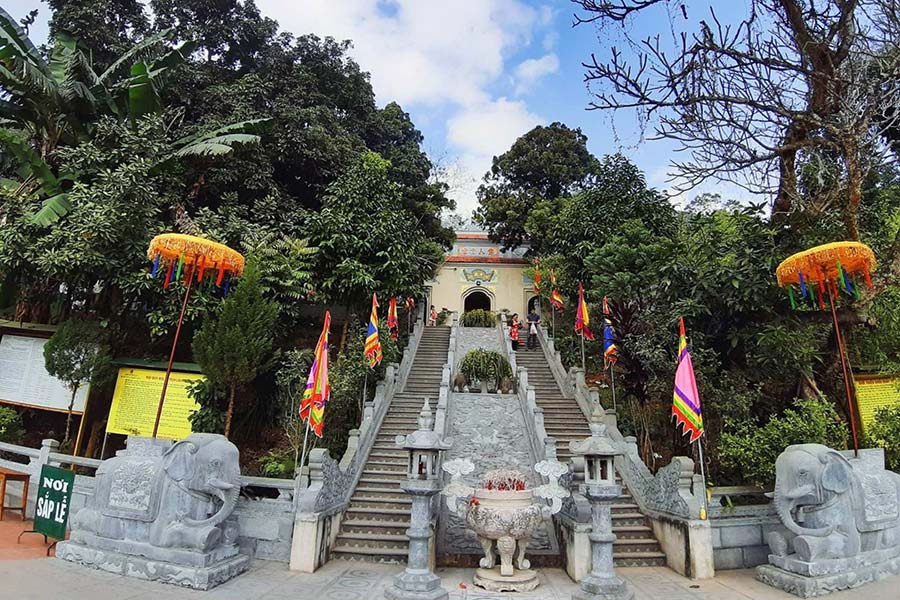English
English

Mount Tan Vien, a harmonious blend of nature and spirituality, embodies the grand and serene beauty of Ba Vi’s mountainous landscapes. Located just over 40 km from Hanoi, this mountain is a must-visit destination for explorers and seekers of tranquility. Standing at 1,227 meters, Tan Vien Peak rises like a verdant crown, surrounded by King Peak and Ngoc Hoa Peak.

Here, the pristine beauty of nature intermingles with a sacred atmosphere, captivating visitors with its misty mountains and lush forests. A visit to Tan Vien is not only an adventure through awe-inspiring scenery but also an opportunity to immerse yourself in the thousand-year-old legends and mystical stories of this sacred land.
Recognized as a National Cultural and Historical Heritage site, Mount Tan Vien is not only a natural wonder but also a place of deep spiritual significance. It is said to be the dwelling of Saint Tan Son Tinh, the revered deity of the Vietnamese "Four Immortals." Ancient temples are scattered across the mountainsides, nestled amidst the verdant forests, like precious jewels radiating brilliance across Ba Vi.
Visitors here can feel the whispers of the past carried by the winds and see the trees that bear witness to a glorious history spanning thousands of years.
Mount Tan Vien is renowned for its unspoiled natural beauty and ancient cultural heritage. Every year, thousands of visitors are drawn to its sacred temples.

Situated atop the mountain, Upper Temple honors the guardian deity of heaven and earth, Son Tinh. Built during the reign of King An Duong Vuong, the temple has stood for millennia and is the holiest site in this region. During the Full Moon Festival in January, the temple resonates with the sound of drums, prayers, and the vibrant celebrations of pilgrims from far and wide, creating a lively and colorful scene amidst the expansive mountains.

Nestled at the foot of the mountain, Lower Temple is surrounded by lush greenery. According to legend, this is where the three brothers of Son Tinh gathered firewood and built a shelter in the deep forest. With its traditional architectural style, including the Three-Gate Entrance, Main Hall, and Sanctuary, the temple evokes an ancient fairy tale atmosphere, inviting visitors to step back into a time of enduring legends.

Located midway up the mountain, Middle Temple is a stunning architectural gem resembling a sparkling jewel among the Ba Vi peaks. Built in the form of a three-section structure symbolizing strength and permanence, the temple houses statues of the Three Deities of Tan Vien, standing solemnly as guardians of this sacred land.
Beyond its spiritual allure, Mount Tan Vien enchants visitors with its breathtaking scenery. Trails wind through dense forests, with gentle breezes and vibrant greenery creating an immersive natural experience. The panoramic views, serene atmosphere, and fresh mountain air paint a poetic picture of tranquility.
At the mountain’s base, various eco-tourism sites like Ba Vi National Park, Ao Vua, Khoang Xanh – Suoi Tien, and Thien Son – Suoi Nga offer diverse recreational options. For added relaxation, luxurious resorts provide spa and massage therapies, ensuring a rejuvenating retreat in harmony with nature.
4. The Best Time to Visit Mount Tan Vien

Visitors can explore Mount Tan Vien year-round, with each season showcasing its unique charm. However, to experience the vibrant Upper Temple Festival, plan your visit early in the year, particularly on the Full Moon of January. During this peak season, accommodations fill up quickly, so early reservations are highly recommended.
Mount Tan Vien, with its majestic beauty, picturesque landscapes, and rich spiritual heritage, is the perfect destination for those seeking inner peace. This journey is not only an exploration of nature but also a cultural pilgrimage, echoing the timeless legends of a storied past. Take a moment to embark on this adventure, where every step unveils wonders, where nature and spirituality converge in an emotional symphony, and where you’ll find serenity amidst the poetic mountains and forests.